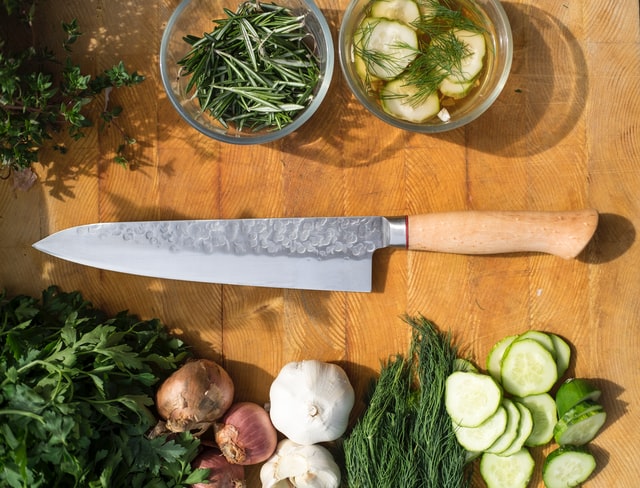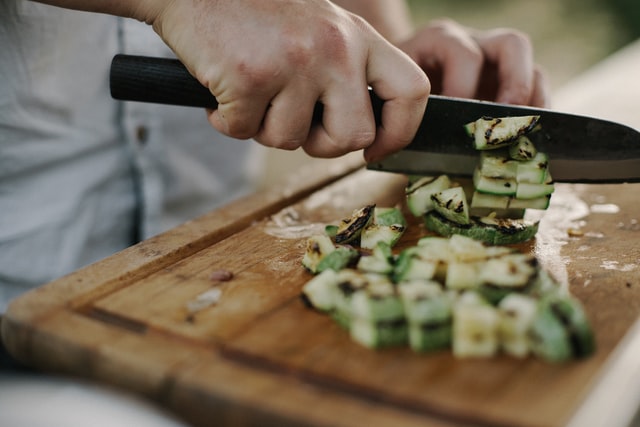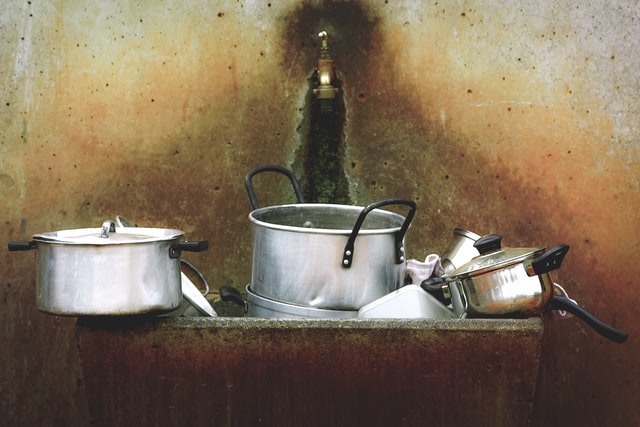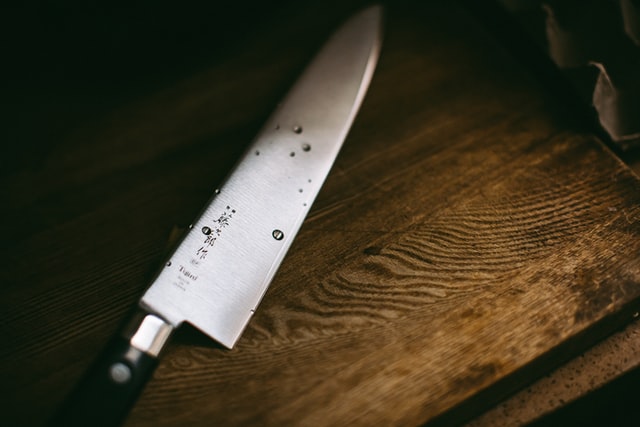There may be no other piece in your arsenal as important as your chef’s knife! This is part two of a series that discusses learning what to look for in a quality chef’s knife and also goes over some common faux pas that many people commit that can flush that investment down the drain. For those of you here on the site for the first time, it may be a good idea to click here to check out part one before going any further. Part one concluded with an introduction to the Western style chef’s knife. It’s time to check out what the fuss is all about with its Japanese counterpart. Let’s crack in!

Japanese Chef’s Knife
Traditionally, Japanese knives do not have the form of a Western chef’s knife. Instead, there is a dizzying array of forms and sizes that vary by location, each one specifically suited for its duty, ranging from fish-filleting knives to vegetable-cutting knives to sashimi-slicing knives to noodle-cutting knives to blowfish knives, eel knives, clam knives, and more. Most of those knives have a single edge (also known as a chisel bevel), which means that the knife narrows from the spine to the edge on only one side. (This also implies that the knives are either right- or left-handed.) A chisel bevel can achieve higher sharpness, but it is more prone to chipping if applied incorrectly.
The Best Of Both Worlds?
There are Western-style Japanese knives. These have a straighter edge and are lighter in weight than a real Western knife; the steel is usually tougher as well, thus using a honing steel to maintain the edge between sharpening is ineffective.
Around the mid-twentieth century, Japanese knife producers began producing knives with a more Western aesthetic, including a chef’s knife known as a gyutou. These are the Japanese chef’s knives I’m going to talk about in this review. Gyutou and other Japanese knives are often composed of stronger steel, which can keep an edge for a longer period of time but is also more difficult to sharpen. Japanese chef’s knives are straighter than Western equivalents. They are also lighter and thinner. They’re also less suitable for use with an honing steel since the more brittle metal doesn’t flex in the same manner.

Japanese Chef’s Knife: Suited For Either Hand
To make matters more difficult, most Western-style Japanese blades feature an asymmetrical double bevel—the blade edge is sharpened on both sides, but not at the same angle on both sides, as a true Western chef’s knife is. This means that Western-style Japanese knives are frequently sharper, but they can also be used in either the right or left hand. They’re more forgiving of handedness than traditional Japanese knives—conceivable it’s to wield them in the wrong hand, although it’s not ideal. Lefties should make certain that the Japanese knives they purchase have been honed for them. This refers to a left-handed edge geometry.
Japanese chef’s knives have less curve than German knives. This makes them less suited for the rock-chop (though it is still possible to use them that way) and more adept at the pulling stroke. Western-style Japanese knives are also lighter and more brittle in weight, making them unsuitable for heavy-duty activities such as chopping away at bones.
If there’s one thing to take away from this, it’s that casual home cooks are better off acquiring a Western chef’s knife because they’re more sturdy and easier to maintain. A Japanese knife can be a very appealing buy for experts and hobbyists who want to go deeper into edge geometry and whetstone sharpening.

Faux Pas One: Leaving a Chef’s Knife in the Sink
Metal or ceramic sinks are available. Sinks are both slick and sleek. Sinks are frequently clogged with soap suds and plates. A knife in a sink will slide around, knock into the walls, or, worse, become hidden under soap bubbles and dirty dishes, waiting for an unsuspecting hand to reach down for it. After using a knife, never leave it in the sink.

Faux Pas Two: Placing It in the Dishwasher
A knife has no place in the dishwasher, whether it’s on the rack or in the utensil caddy. The high-pressure water spray will inevitably knock it around, forcing it to hit the rack and dull its blade. Always hand-wash your knives.
What’s that, you say? Do you want to rinse it and set it out to dry? Well…

Faux Pas Three: Leaving It Wet or on a Drying Rack
If you have a specific spot to dry your knife after rinsing it, where it won’t be knocked into other utensils or scraped against the edge of a rack, and if you have a set of well-maintained stainless steel blades that won’t rust, then I suppose you can rinse and air-dry your knives.
However, the reality is that your knife will most certainly hit against other things, and the microscopic scratches and pits in the surface will turn into macroscopic scratches and pits as rust eats away at them.
The lesson to be learned from the last three scenarios is to always wash your knife by hand and to promptly dry it with a towel after washing it.

Bonus Faux Pas: Using a Chef’s Knife To Scrape Together Ingredients
I understand. It’s a simple habit to develop. You’ve just finished mincing an onion, and it’s all over the cutting board. You want to make a tidy little mound, so you scrape it all together with the knife’s edge. The issue is that a knife blade’s edge is quite robust when pulled straight up and down, but it can easily bend when pushed from side to side. Scraping food with a knife perpendicular to the board will cause the blade’s edge to become out of line, dulling it.
If you need to move or pick up food on your cutting board, hold your knife blade at an extremely sharp angle—almost parallel to the cutting board—before gently sliding it, or use the blade’s back (dull) side. Better still, invest in a bench scraper, a tool specifically designed for the job (once you’ve gone bench scraper there’s no going back).
In Conclusion…
There are a lot of choices in both the Western and Japanese chef’s knife styles that combine quality and a reasonable price. You may want to start with one of each. Trust me, you may go through many knives of each type before you find what floats your boat. Each individual manufacturer will have their own takes and you will eventually find a style and maker that you will stick with.
Start at the low end of the price range! Nothing is worse than investing so much into a knife that you force yourself to adapt to it. The knife should fit you, not the other way around. Also, don’t forget that, no matter how much (or little) you pay for a knife, you have to treat that blade properly. Take care of your knife and your knife will take care of you! I’ll see you in the next one…
